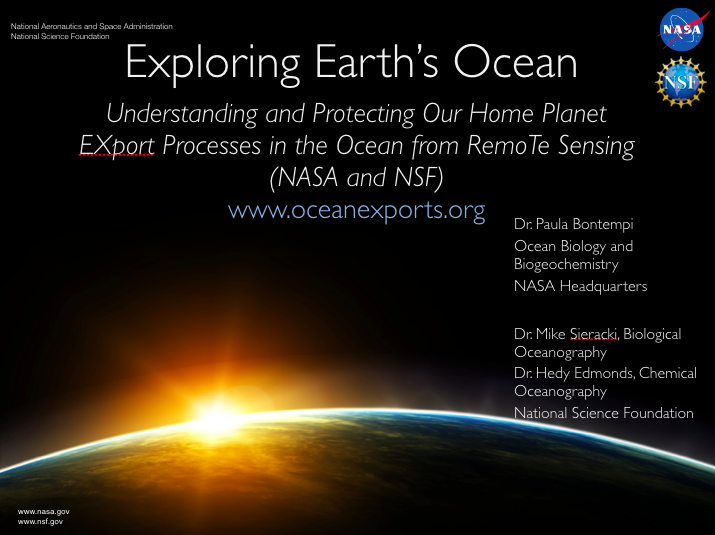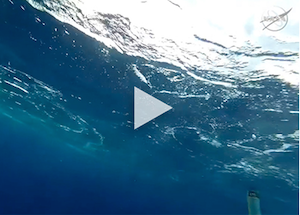Media & Educational Outreach
Exploring Earth’s Ocean
Slide presentation: Understanding and Protecting Our Home Planet EXport Processes in the Ocean from RemoTe Sensing (NASA and NSF)
Expedition Probes Ocean’s Smallest Organisms for Climate Answers
Satellite images of phytoplankton blooms on the surface of the ocean often dazzle with their diverse colors, shades and shapes. But phytoplankton are more than just nature’s watercolors: They play a key role in Earth’s climate by removing heat-trapping carbon dioxide from the atmosphere through photosynthesis.
NASA and the National Science Foundation are funding the Export Processes in the Ocean from Remote Sensing (EXPORTS) oceanographic campaign. With more than 100 scientists and crew from nearly 30 research institutions, EXPORTS is the first coordinated multidisciplinary science campaign of its kind to study the pathways, fates and carbon cycle impacts of microscopic and other plankton using two research vessels, a range of underwater robotic platforms and satellite imagery. The team will work from the research vessels (R/V) Roger Revelle and Sally Ride, operated by the Scripps Institution of Oceanography, University of California, San Diego.
Testing neutrally buoyant sediment traps in Monterey Bay
Neutrally buoyant sediment traps capture particles sinking in the ocean. In July 2018 students and other scientists from Moss Landing Marine Laboratories tested new instruments in Monterey Bay with Meg Estapa from Skidmore College.
20 Years of Ocean Color
For the last 20 years, NASA Earth observing satellites have been capturing, from space, one thing that makes Earth unique among the thousands of other worlds we have discovered: Life. In the Northern Hemisphere, ecosystems on land wake up in the spring, taking in carbon dioxide and exhaling oxygen as they sprout leaves - and a fleet of Earth-observing satellites tracks the spread of the newly green vegetation. Meanwhile, in the oceans, microscopic plants drift through the sunlit surface waters and bloom into billions of carbon dioxide-absorbing organisms - and are detected by instruments on satellites that map the swirls of their color.
This new animation captures the entirety of our 20-year record, made possible by multiple satellites, compressing a decades-long view of life on Earth into a captivating few minutes.
Deploying the Wirewalker
Scientists lower the Wirewalker, an platform carrying instrument package designed to take numerous water-column measurements (e.g., temperature, salinity, oxygen, phytoplankton numbers, carbon concentration). Package travels up and down a 150-meter-long wire situated between a drifting surface buoy and sediment traps. Sediment traps are collecting sinking particles (exported particles), measured later in the laboratory for their chemical and biological content.

